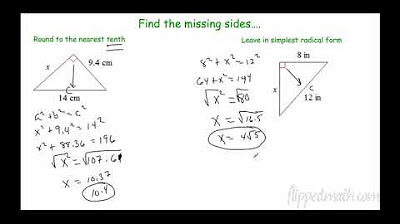Numerasi - Aktivitas Numerasi 1 (SMP dan SMA)
Summary
TLDRIn this lesson, Mr. Marwan, a 7th-grade teacher, integrates numeracy skills into a science class by teaching measurement concepts. He takes his students on a practical activity where they visit local stores to explore different product sizes and prices, such as detergent and cooking oil. The students compare product measurements, calculate costs, and draw conclusions about value, enhancing their math skills in real-life situations. The activity promotes teamwork and problem-solving while reinforcing algebraic and measurement concepts. It shows how numeracy can be incorporated across subjects, not just in math.
Takeaways
- 📚 Numeracy skills are not only the responsibility of math teachers; all subjects can incorporate numeracy in their lessons.
- 👨🏫 Mr. Marwan, a 7th-grade science teacher, aims to improve his students' numeracy skills through a lesson on measurement of fundamental and derived quantities in science.
- 🏪 For this lesson, Mr. Marwan plans an activity where students visit local stores to apply their understanding of measurement to real-world situations.
- 👥 Students are divided into groups, and each group is assigned a different location to visit, such as the school canteen or a nearby minimarket.
- 📏 The objective is to have students measure quantities like mass, volume, and prices of various products, and then compare them using algebraic calculations.
- 📊 One example is comparing the price and quantity of detergent in different packaging sizes to understand cost-effectiveness.
- 🧠 This activity challenges students to calculate and compare, promoting critical thinking and real-world application of numeracy skills.
- 💡 The lesson helps students understand the relationship between quantity (e.g., kilograms and grams) and pricing, enhancing their algebraic and reasoning skills.
- 🎤 Each group will present their findings in class, helping to reinforce communication and teamwork skills.
- 🔑 The key to successful group activities is ensuring clear roles and tasks for each student, tailored to their abilities, fostering a collaborative learning environment.
Q & A
What subject is Pak Marwan using to improve his students' numeracy skills?
-Pak Marwan is using the science subject (IPA) to improve his students' numeracy skills, particularly through a lesson on measurements of basic and derived quantities.
What real-life activity does Pak Marwan organize to teach his students about measurements?
-Pak Marwan organizes a practical activity where students visit local stores to measure and compare the sizes of different products, such as detergent, cooking oil, and drinks.
How are the students grouped for the activity, and what roles are assigned?
-Students are divided into groups, and each group must assign a leader, a notetaker, and a presenter to share the results with the class.
What is the main concept being reinforced during the activity?
-The main concept being reinforced is measurement, specifically understanding mass (grams and kilograms) and applying it in real-life scenarios.
How does Pak Marwan integrate numeracy with the lesson on basic and derived quantities?
-Pak Marwan integrates numeracy by having students measure product sizes, calculate total mass, and compare prices of different packaging, which involves basic arithmetic and algebraic skills.
What is one example of a product the students are tasked with analyzing during the activity?
-One example is detergent, where students compare the mass and price of different packaging (500 grams and 2 kilograms).
What numeracy skills are being developed through the comparison of different product sizes and prices?
-Students develop skills such as converting units of measurement, calculating total quantities, and comparing costs to determine the most economical option.
What conclusion do the students reach when comparing the price of 500 grams and 2 kilograms of detergent?
-The students conclude that buying the 2-kilogram detergent is more cost-effective, saving 8,000 rupiah compared to buying eight 500-gram packages.
How does Pak Marwan ensure that each student actively participates in the group activity?
-Pak Marwan ensures participation by assigning specific roles within the group, such as leader, notetaker, and presenter, and encouraging collaboration.
What broader lesson about numeracy does the script convey beyond mathematics?
-The script conveys that numeracy can be developed across various subjects, not just in mathematics, by incorporating real-life applications of numbers, measurements, and reasoning.
Outlines

此内容仅限付费用户访问。 请升级后访问。
立即升级Mindmap

此内容仅限付费用户访问。 请升级后访问。
立即升级Keywords

此内容仅限付费用户访问。 请升级后访问。
立即升级Highlights

此内容仅限付费用户访问。 请升级后访问。
立即升级Transcripts

此内容仅限付费用户访问。 请升级后访问。
立即升级浏览更多相关视频

English Expressions: three-word phrasal verbs

Penggunaan Simple Present Tense dan Contohnya | Kampung Inggris LC

ESL Writing - Summarizing and Paraphrasing

Mastering the Nominative Case in German: A Complete Guide! (Beginner / A1-A2) - 1080p/Full HD 🔥

Geometry – 7.1 Pythagorean Theorem and Its Converse

Symmetrical Name Monsters with Mr. Snyder

Rounding and Working with Significant Figures in Physics
5.0 / 5 (0 votes)
